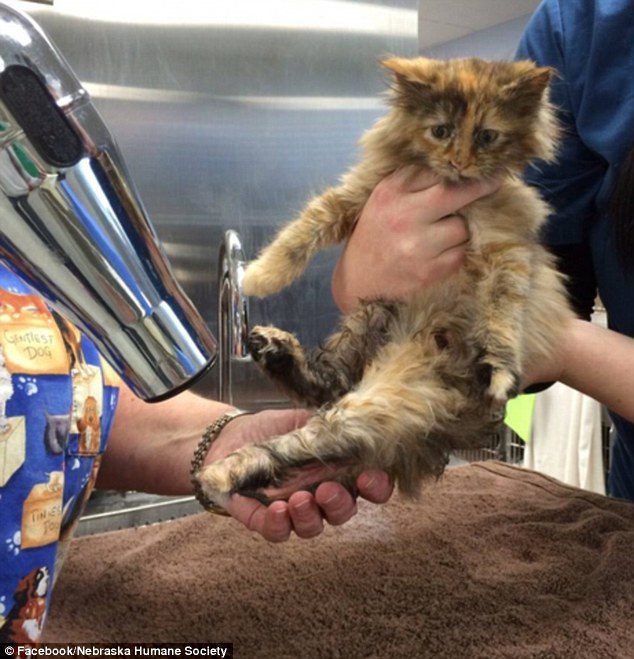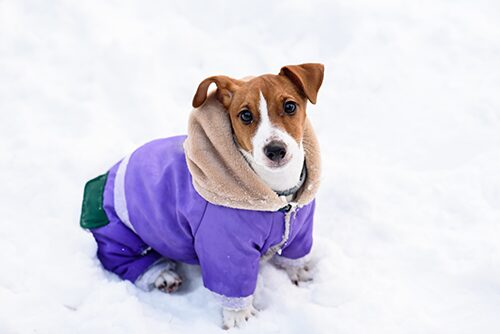Key Takeaways:
- Cats are more susceptible to cold weather than humans due to their smaller size and thinner coats.
- It is important to provide shelter and warm bedding for outdoor cats during the winter months.
- Cats can suffer from hypothermia and frostbite if exposed to extremely low temperatures for prolonged periods of time.
- Monitor your cat's behavior and look out for signs of discomfort or distress in cold weather.
- Limit your cat's time outdoors during colder months and consider providing indoor activities to keep them active and entertained.
Are you a cat owner who worries about your furry friend during the winter months? If so, you're not alone. Understanding when it's too cold for your cat is essential to ensuring their health and well-being. In this article, we will explore the signs that indicate your cat may be feeling the chill, as well as provide tips on how to keep them warm and cozy. By delving into this subject, you'll gain valuable knowledge that can help protect your beloved pet from the winter woes. So, let's dive in and discover how to keep our feline friends safe and comfortable when temperatures drop!
Common Winter Problems for Cats
Winter can bring about some unique challenges for cats. One common issue is the cold weather, which can be uncomfortable and even dangerous for our feline friends. Cats are susceptible to frostbite and hypothermia just like humans are. They may also experience dry skin and cracked paws from the cold air and low humidity indoors.
Another problem that arises during winter is the lack of exercise. Cats tend to be less active in colder temperatures, which can lead to weight gain and other health issues. Additionally, indoor cats may become bored and restless due to being cooped up inside all day.
Frostbite
- Frostbite occurs when a cat's body tissues freeze due to exposure to extreme cold.
- The ears, paws, and tail are particularly vulnerable to frostbite.
- Signs of frostbite include pale or blue skin, pain, swelling, and blisters.
- If you suspect your cat has frostbite, seek veterinary care immediately.
Hypothermia
- Hypothermia happens when a cat's body temperature drops below normal levels.
- Shivering, lethargy, shallow breathing, and decreased heart rate are signs of hypothermia in cats.
- If you think your cat is suffering from hypothermia, wrap them in warm blankets and contact a veterinarian right away.
Signs it's Too Cold for Your Cat Outside
Cats have a natural tolerance for colder temperatures than humans do. However, there are still signs that indicate it may be too cold for them to be outside. If you notice your cat exhibiting any of these behaviors, it's best to bring them indoors and provide a warm shelter:
- Shivering or trembling
- Lifting paws off the ground or limping
- Hunched posture with fur standing on end
- Seeking warm spots like car engines or under hoods
The Importance of Providing Shelter for Your Cat in Cold Weather
Having a warm shelter is crucial for cats during cold weather. Cats can suffer from hypothermia and frostbite if they don't have a safe place to escape the cold. A good shelter should:
- Be insulated to retain heat
- Have a waterproof roof to prevent leaks
- Be elevated off the ground to avoid dampness and cold surfaces
- Have bedding such as straw or blankets for extra warmth
Recognizing Signs of Discomfort from Cold in Your Cat
Cats may show signs of discomfort when exposed to cold weather. Look out for these signs that indicate your cat might be feeling too cold:
- Trembling or shivering
- Curling up tightly in an attempt to conserve body heat
- Pulling their ears back against their head
- Licking or biting at their paws excessively due to discomfort or pain from the cold ground
Taking Precautions When Bringing Your Cat Indoors During Winter
If you decide to bring your outdoor cat indoors during winter, there are some precautions you should take:
Gradual Transition
Introduce your cat to the indoor environment gradually. Start by confining them to one room, then gradually give them access to more areas of the house.
Litter Box Training
Show your cat where the litter box is located and make sure it's easily accessible to them. Provide a clean litter box at all times.
Provide Enrichment
Keep your indoor cat entertained with toys, scratching posts, and interactive play sessions. This will help prevent boredom and keep them mentally stimulated.
Keeping Your Outdoor Cat Warm and Safe in Freezing Temperatures
If your cat spends time outdoors during winter, there are steps you can take to ensure their safety and warmth:
Create a Cozy Shelter
Provide a well-insulated shelter for your outdoor cat with bedding that retains heat, such as straw or blankets. Make sure the shelter is protected from wind and moisture.
Food and Water
Ensure your outdoor cat has access to fresh food and water that won't freeze. Use heated bowls or change the water frequently to prevent it from turning into ice.
Protecting Your Indoor Cat from Dry Air and Other Winter-related Issues
Dry air is a common problem during winter, which can lead to dry skin, chapped lips, and respiratory issues for cats. To protect your indoor cat:
Add Humidity
Use a humidifier in your home to increase moisture levels in the air. This will help prevent dryness of the skin and respiratory passages.
Grooming Care
Regularly brush your cat's fur to remove dry skin flakes and distribute natural oils. This will help keep their coat healthy and moisturized.
Tips on Dressing Up Your Cat for Colder Weather
If you want to dress up your cat to keep them warm during winter, here are some tips:
Choose the Right Clothing
Select clothing that is specifically designed for cats, ensuring it fits properly without restricting movement or causing discomfort.
Introduce Clothing Gradually
Start by getting your cat used to wearing small accessories like a bandana or collar before introducing full outfits. Reward them with treats and praise for positive associations.
In conclusion, it is important to keep our cats safe during winter. If the temperature drops below freezing, it is too cold for them to be outside for long periods of time. Providing them with warm shelter and keeping them indoors during extreme cold weather will help keep them healthy and happy.
How cold is too cold for a cat?
It is important to bring your outdoor cat inside if the temperature falls below 45 degrees to prevent frostbite on their ears, tail, and paws.
How long can a cat survive in 30 degree weather?
It is important to provide shelter for cats when the temperature drops below freezing. Cats can only survive for a few days in temperatures around or below 20°F. Outdoor cats should not be left outside all day and night when temperatures are at or below 45°F (7°C) or colder.
What temperature can a cat tolerate?
Even though cats can tolerate warm temperatures, it is advised by veterinarians to keep the air conditioning on when you're not at home. To ensure safety, set your thermostat to maintain a temperature between 78 and 80°F. If desired, you can let the AC run cooler to provide extra comfort for your pet.
Can cats get sick from cold weather?
Allowing your cat to go outside in cold and rainy weather can result in illness and hypothermia. A cat's fur coat is only effective in keeping them warm when it is dry. If their fur becomes wet or matted from rain or snow, it cannot insulate heat properly.
How do homeless cats stay warm in the winter?
Feral cats find shelter in abandoned buildings, empty vehicles, and even dig holes in the ground to stay warm during winter and cool in the summer. If there are feral or community cats in your area, here are some ways you can assist: Provide additional food during the winter season.
Are cats OK outside in the winter?
Veterinarians usually recommend not letting your cat stay outside without a warm shelter when the average daily temperature is below 45°F. This is based on the average temperature, not just a one-time occurrence. For example, if the temperature has been 55°F all day but drops to 44°F at night, it is likely still acceptable for your cat.
















